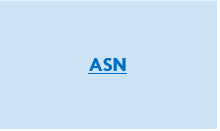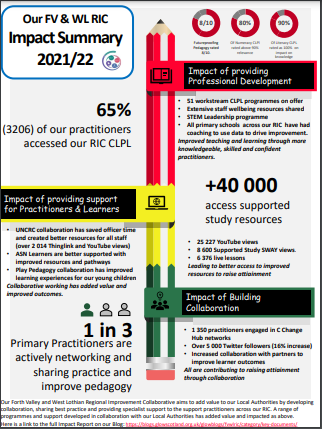Forth Valley and West Lothian Regional Improvement Collaborative
Attendance Focus: August -October 2022
Research Summary
| Research reference (with link) |
| School non-attendance: definitions, meanings, responses, interventions Dario W Pellegrini
March 2007 |
| Research methodology / Data Collection methods |
| This article reviews definitions linked to ‘school refusal’, examines discourses on school non-attendance and reviews tools and interventions which can be used to support non-attenders, their parents and schools. |
| Key relevant findings |
| This article argues against using the definitions ‘school refusal’ and ‘school phobia’, and recommends instead using the phrase ‘extended school non-attendance.’ Pellegrini suggests that the term ‘extended school non-attendance’ describes the visible behaviour neutrally, without suggesting what related factors contribute to it.
The author’s review of written texts on the subject of extended non-school attendance identifies a dominant clinical discourse with use of language such as ‘treatment’, ‘symptoms’, ‘disorder’ and ‘diagnosis’. Other discourses focus on the legal elements of school non-attendance, directing the focus on parents as the problem rather than examining systemic factors which may influence non-attendance. Referencing a study by Malcolm et al (2003) of parents, children and education staff on factors influencing non-attendance there were varying factors identified by each of these groups. For pupils factors included problems with lessons or teachers, the complexity of secondary schools, peer pressure, social isolation and bullying. Parents of both children with and without attendance problems believed that bullying and problems with teachers were the principal reasons for non-school attendance while school staff believed that low parental interest and low belief in the value of education were contributing factors. Pellegrini suggests that all parties need to be supported in understanding each other’s discourses and to devise interventions which address the factors influencing attendance at individual (child), group (peer/family) and systemic (school) level. The article discusses the importance of considering characteristics of the child and family as factors contributing to non-attendance but also highlights the need to consider school risk factors. One suggested way of doing this is using the ‘School Refusal Assessment Scale’ developed by Kearney and Silverman (1990). This assessment helps identify the needs of individual children through 4 functions of non-attendance * and is completed by the child and their parents. The limited evidence presented in the text suggests that using the SRAS assessment scale could be beneficial in improving measures of non-attendance, however it recommends being used alongside other assessments. Early identification of pupils at risk of non-attendance should take place, using a multi-agency approach to identifying factors which could be a cause. Interventions to support returning to school at individual level should not exacerbate any underlying issues, such as anxiety, by forcing a child to spend time within a school setting. Unless environmental factors which have led to the non-attendance are addressed such interventions are likely to be unsuccessful. Effective interventions at systemic level include awareness raising through staff training, ensuring a member of staff has responsibility for attendance, flexible part-time timetables, peer-mentoring, effective anti-bullying policies, identified ‘safe havens’ and whole school emotional literacy programmes. Parental interventions such as training in positive behaviour management are also cited. Educational Psychologists have a key role to play in supporting work with non-attending pupils, this can include assessment, intervention, parental training, social skills and behavioural support. * 4 functions of non-school attendance (Kearney et al 1990): 1. avoidance of specific fear and anxiety-provoking stimuli/ settings 2. Escape from social situations which are unpleasant and/ or an element of evaluation is present 3. Attention seeking 4. Positive reinforcement (e.g opportunity to spend time with peers or parents by non-attending). |
| Questions research raises |
| How well-informed are staff on the risk factors for non-attending pupils?
How quickly do we take a multi-agency approach to addressing non-attendance? How involved are EP staff in the early stages of identifying ‘at risk’ pupils and risk factors? How does each setting promote and model emotional literacy across the whole school context? |
| Follow up reading suggestions |
| Kearney, C. A. (2001). School refusal behaviour in youth: A functional approach to assessment and treatment. Washington, DC: American Psychological Association.
Kearney, C. A., & Albano, A. M. (2004). The functional profiles of school, refusal behaviour: Diagnostic aspects. Behavior Modification, 28(1), 147–161. Kearney, C.A. & Silverman, W.K. (1990). A preliminary analysis of a functional model of assessment and treatment for school refusal behaviour. Behavior Modification, 14(3), 340–366. Yoneyama, S. (2000). Student Discourse on ‘Tôkôkyohi’ (school phobia/refusal) in Japan: burnout or empowerment? British Journal of Sociology of Education, 21(1), 77–94. |













